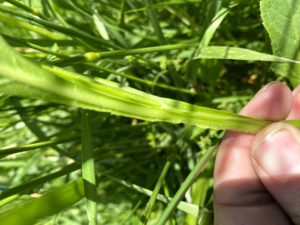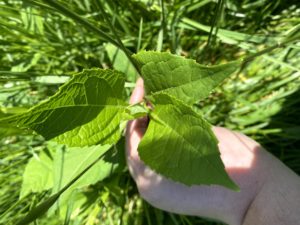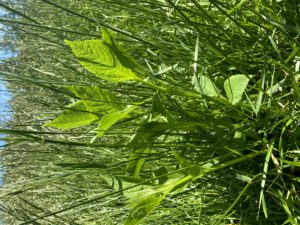Stickweed / Yellow Crownbeard – Weed ID Wednesday
go.ncsu.edu/readext?693482
en Español / em Português
El inglés es el idioma de control de esta página. En la medida en que haya algún conflicto entre la traducción al inglés y la traducción, el inglés prevalece.
Al hacer clic en el enlace de traducción se activa un servicio de traducción gratuito para convertir la página al español. Al igual que con cualquier traducción por Internet, la conversión no es sensible al contexto y puede que no traduzca el texto en su significado original. NC State Extension no garantiza la exactitud del texto traducido. Por favor, tenga en cuenta que algunas aplicaciones y/o servicios pueden no funcionar como se espera cuando se traducen.
Português
Inglês é o idioma de controle desta página. Na medida que haja algum conflito entre o texto original em Inglês e a tradução, o Inglês prevalece.
Ao clicar no link de tradução, um serviço gratuito de tradução será ativado para converter a página para o Português. Como em qualquer tradução pela internet, a conversão não é sensivel ao contexto e pode não ocorrer a tradução para o significado orginal. O serviço de Extensão da Carolina do Norte (NC State Extension) não garante a exatidão do texto traduzido. Por favor, observe que algumas funções ou serviços podem não funcionar como esperado após a tradução.
English
English is the controlling language of this page. To the extent there is any conflict between the English text and the translation, English controls.
Clicking on the translation link activates a free translation service to convert the page to Spanish. As with any Internet translation, the conversion is not context-sensitive and may not translate the text to its original meaning. NC State Extension does not guarantee the accuracy of the translated text. Please note that some applications and/or services may not function as expected when translated.
Collapse ▲This week’s pasture weed is Yellow Crownbeard, or stickweed. Stickweed is a perennial weed and can grow quite tall, as much as 10-12 ft, but is usually around 3-4 ft tall. It has medium to large leaves and has a small yellow flower. It’s most distinguishable feature are the “wings” that run along the stem, as pictured below.
Livestock will usually not eat stickweed and with its tall presence, it can shade out places in our pastures or hayfields where grass could be growing instead. As it dies off for the year, it leaves a stick standing in its place over the winter months.
The effectiveness of your control options for stickweed, or yellow crownbeard, greatly depend on the size and maturity of your plants. If they are still smaller in size with more tender stems, you can expect a better outcome than if they are taller with a woodier stem. Even if you catch them while small and actively growing, please remember that a good weed control program never really ends. This means that even though you may see some decline in weed populations the first year, know that you will need to continue to scout for weeds and re-evaluate control methods each growing season.
A study from Virginia Tech states that “Stickweed was controlled 93 percent and 83 percent in 2001 and 2002, respectively, with 2 pints per acre of Grazon P+D (Table 2). However, at least 3 pints of Redeem R&P per acre were required to achieve this same level of stickweed control. Crossbow, 2,4-D alone, or 2,4-D in combination with Banvel generally controlled stickweed between 67 and 83 percent. However, using Banvel alone or Ally resulted in less than 50 percent stickweed control.”
No matter what control option you choose, be sure to fully read the label of any products that you use.









